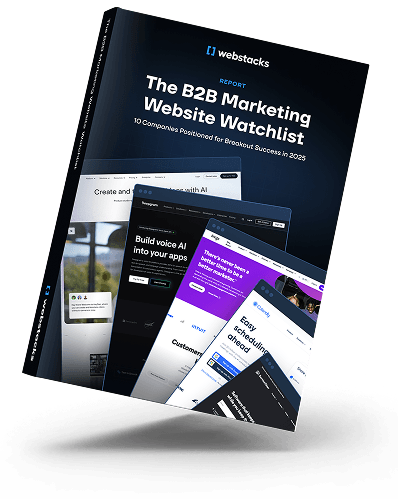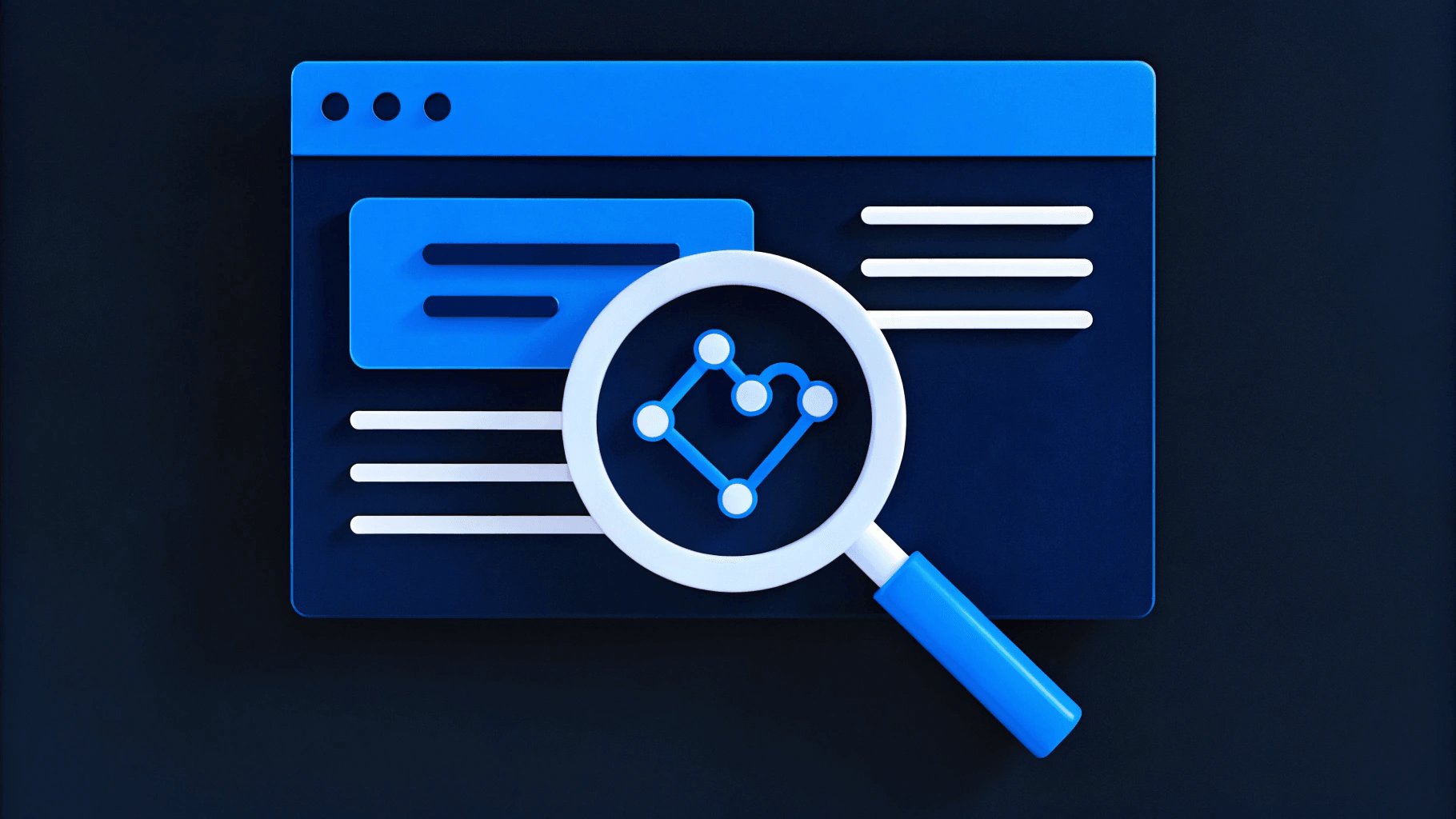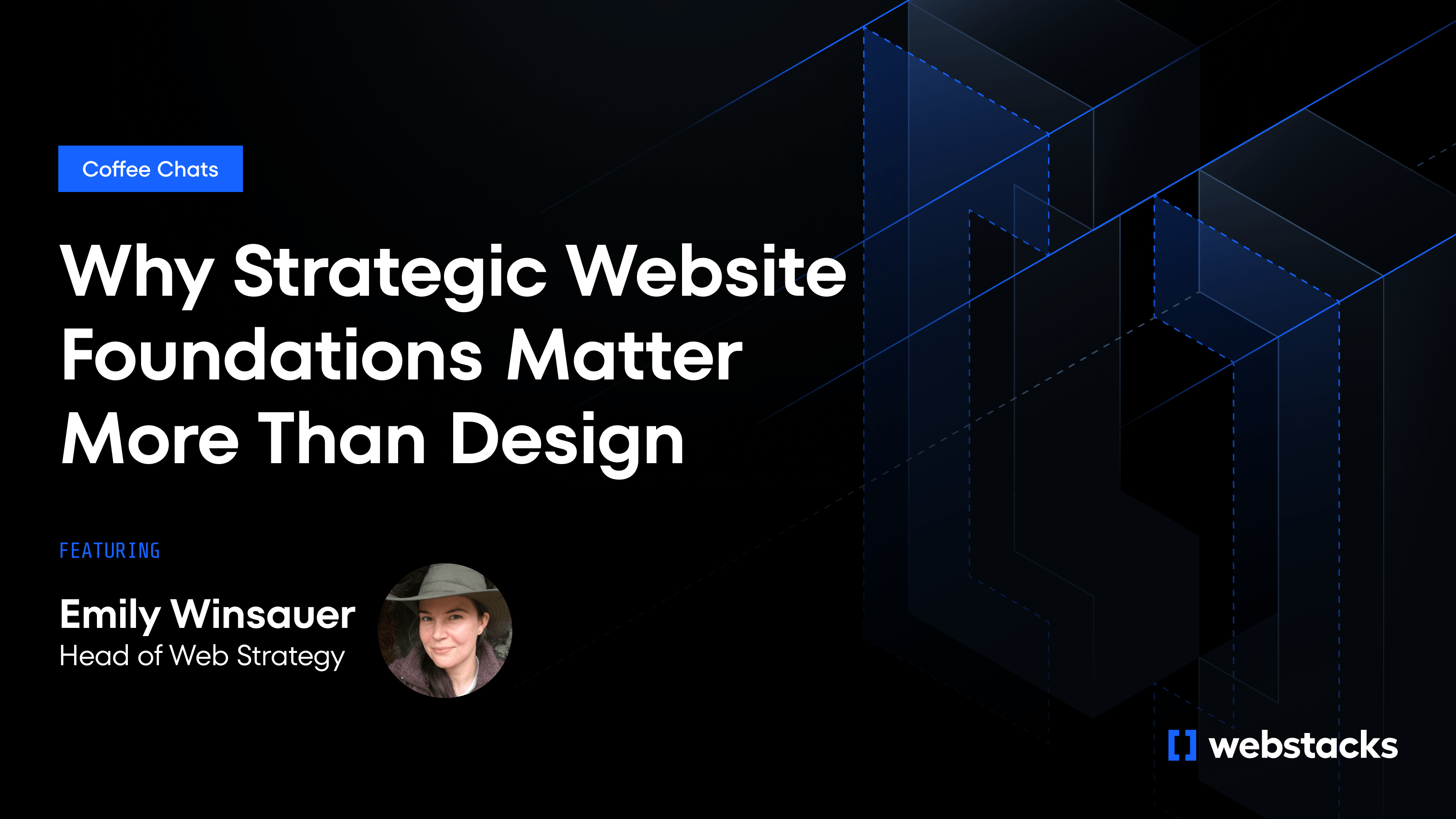Most B2B buyer personas end up collecting dust. You know the ones — stock photos paired with generic pain points that sound impressive in strategy meetings but never actually influence your website or messaging decisions.
The problem isn’t personas themselves. It’s building profiles that exist in isolation, disconnected from how buyers move through your site and convert. These documents might describe your audience, but they don’t drive the website experiences or content decisions that fill your pipeline.
At Webstacks, we believe buyer personas should be more than static docs — they should be the blueprint for your website UX, messaging, and content strategy. Your site should adapt to real buyer behavior, not the other way around. That’s why we treat websites like products: modular, testable, and continuously optimized for conversion.
Here’s how to build and activate B2B buyer personas that go beyond demographics to influence website experiences and drive measurable business results.

What High-Converting B2B Buyer Personas Include
Most B2B personas focus on demographics that don't drive decisions. For example, age ranges and favorite coffee orders won't help you write copy that converts or design pages that guide buyers to "yes’’.
A conversion-focused persona should include a few key elements.
Role and Decision-Making Authority
Skip the job title. Focus on their buying committee position: Are they decision-maker, influencer, or gatekeeper?
A VP of Marketing approaches your pricing page differently than a Marketing Operations Manager. The VP wants ROI projections and executive summaries. The Ops Manager needs technical specs and implementation timelines.
This shapes everything from your content hierarchy to CTA placement. Decision-makers should see "Schedule Executive Demo" buttons. Influencers should see "Download Technical Overview" CTAs.
Company Context
Industry vertical, company size, and growth stage determine pain point priorities. A 50-person SaaS startup worries about scaling systems. A 5,000-person enterprise is concerned about integration complexity. Your messaging needs to match their reality.
Key Responsibilities and Business Goals
Connect your solution to their success metrics, not just their problems. Don't just say "Sarah struggles with campaign performance." Say, "Sarah needs to increase qualified leads by 30% this quarter or lose budget to paid ads." This transforms generic "increase efficiency" messaging into specific "reduce campaign setup time from 3 days to 3 hours" value props.
Decision Triggers and "Why Now?" Moments
What pushes prospects from research mode to buying mode? Maybe it's missing quarterly targets, a competitor launching a new feature, or their current solution breaking during a product launch. These triggers inform your urgency messaging and help you create content that moves buyers from passive browsing to active evaluation.
Primary Objections and Concerns
Your website should address a prospect’s questions before they even think to ask. If your buyers worry about implementation timelines, don't save that conversation for sales calls. Put implementation timelines on your features page. Add "90-day implementation guarantee" to your header.
Information Sources and Research Methods
Some buyers want 20-page whitepapers. Others want 3-minute demo videos. Your website content should be tailored accordingly.
B2B software buyers often research in this order:
- Peer reviews
- Vendor comparisons
- Free trials
- Sales conversations
Your content strategy should match this journey. Technical buyers start with documentation. Business buyers start with case studies. Design your site navigation accordingly.
Website Behavior Patterns
Track how different segments move through your site. Enterprise buyers spend more time on security pages. Startup buyers skip straight to pricing. Mid-market prospects bounce between features and case studies. This data tells you where to place your strongest conversion elements and which pages need the most optimization attention.
Buying Criteria and Evaluation Process
Map their decision-making process to your content flow. If they evaluate five vendors before shortlisting two, your comparison pages matter more than your feature pages. If they need to present to a buying committee, your ROI calculator matters more than your demo video.
How to Build Buyer Personas That Fill Your Pipeline
To build buyer personas that drive conversions, you need real insights from people who interact with your buyers daily, combined with data that reveals behavior patterns.
1. Start with Internal Team Insights
Gather your go-to-market teams for structured workshops. Your sales team knows which objections come up repeatedly, customer success understands post-purchase behavior, and product marketing sees competitive dynamics.
Schedule focused sessions with each team and ask specific questions:
- "What are the top three reasons deals stall?"
- "Which pain points get prospects most engaged?"
- "What language do buyers use when describing their challenges?"
You can also make use of sales call recordings, as they are goldmines for authentic buyer language and real objection handling scenarios.
2. Interview Your Best Customers
Conduct a listening tour of cross-section of clients. Focus on recent wins and losses for the most accurate insights.
- Ask about their evaluation process: "Walk me through how you first realized you needed a solution like ours."
- Dig into their decision criteria: "What would have made you choose a competitor?"
- Explore timing triggers: "Why was solving this problem urgent right now versus six months ago?"
Then, ask follow-up questions that reveal emotional drivers and organizational dynamics. When someone mentions budget constraints, ask about the business impact of not solving the problem. When they describe evaluation criteria, ask how different stakeholders weighted those criteria.
3. Validate with Hard Data
Cross-reference your qualitative insights with quantitative patterns. Your CRM should reveal trends in deal characteristics, win rates by company size or industry, and sales cycle variations.
Website analytics show which content different visitor segments engage with most. Heat maps reveal where attention focuses on key pages. Session recordings show actual navigation patterns.
Look for content performance patterns that align with your interview insights. If prospects mention evaluating ROI calculators, check which visitors actually use yours and how it correlates with conversion rates. If buyers research case studies extensively, analyze which case studies drive the most qualified leads.
4. Prioritize Customer Segments That Matter
Identify the 2-3 buyer types that drive the most revenue potential. Focus on those profiles that align with your product roadmap, have strong market demand, and represent realistic growth opportunities. Evaluate buyer types using metrics like deal size, sales cycle length, and competitive win rates.
Look at both your current customer base and future growth strategy. For example, if you're targeting enterprise expansion, build personas for those decision-makers, even if they’re not your largest segment today.
Don’t overlook negative personas. These are the buyer types that drain time, require heavy support, or rarely convert. Identifying them helps you design a website that qualifies leads more effectively from the start.

Activate Buyer Personas Through Your Website UX
Creating detailed buyer personas is just the foundation — real conversion lift happens when you translate those insights into your website's user experience.
Personalize Experiences by Role and Stage
The best CMS platforms let you create dynamic content that adapts based on visitor characteristics and behavior. Show enterprise prospects industry-specific case studies while highlighting quick setup features for small business users. Let IT managers access technical specifications immediately while C-suite executives see strategic business outcomes first.
This goes beyond simple content swaps. You can adjust entire user flows based on buyer needs — technical evaluators might need detailed documentation upfront, while economic buyers require ROI calculators and pricing to move forward.
For example, HeyGen partnered with Webstacks to turn its site into a central pillar of its product-led growth strategy. The new site launched in just 60 days, produced 25 000+ organic users in one month, and spun up 40+ SEO-focused pages from a single template, making it easier to attract and convert high-value visitors.
Shape Page Structure Around Buyer Decision Processes
Your website architecture should reflect buyer priorities, not your internal org chart. If your primary buyers value speed and efficiency, place key conversion elements above the fold and minimize clicks to critical information. For buyers who need extensive validation, create comprehensive resource sections and detailed comparison tools.
Navigation should mirror buyer mental models. A CFO seeking expense management software thinks "cost control" and "budget oversight," not your internal product feature names. Structure information around their language and decision process.
Align Messaging with Buyer Language
Headlines, value propositions, and calls-to-action should speak directly to specific pain points using their terminology. A marketing director facing attribution challenges responds differently to "improve campaign performance" than "increase marketing ROI" — even when both address similar outcomes.
Address objections when they arise in each buyer's journey. Technical evaluators need security and integration details early, while budget approvers require cost justification later. Your website should anticipate concerns and provide answers exactly when buyers need them.
Keep Your Buyer Personas Current
Your buyer personas need regular maintenance to stay effective. Without updates, even well-researched profiles suffer from "persona decay," where outdated assumptions gradually erode conversion rates and pipeline performance.
- Establish quarterly reviews with your GTM team. Gather sales, marketing, customer success, and product stakeholders for buyer profile audits. Analyze conversion rates by traffic source, demo-to-close rates by industry, and content engagement patterns by role.
- Validate assumptions through website analysis. A/B test different value propositions, CTAs, and page layouts to verify which elements truly resonate with each segment. Scroll depth and time on page by audience segment reveal how different buyers actually consume your content.
- Create feedback loops with customer-facing teams. Monthly sessions with sales reps surface evolving pain points, new objections, and changing decision criteria from prospects. Customer success teams reveal how buyer needs shift post-purchase.
- Monitor market forces that reshape your buyers. Industry trends, competitive shifts, and economic factors create new customer segments while making others irrelevant. Remote work created new decision-makers, economic uncertainty shifted budget priorities, and regulatory changes alter evaluation criteria overnight.
For teams with limited resources, focus maintenance on pain points, objections, and decision criteria that directly influence messaging and conversion paths. Small updates to these core components often deliver significant performance improvements.
Turn Buyer Personas Into Pipeline Growth
When you stop building personas around job titles and surface details, and start focusing on what drives decisions, that’s when things start to convert. The most effective personas zero in on what influences decisions, such as real pain points, evaluation triggers, objections, and buyer behavior.
But personas alone aren’t enough. You need the infrastructure to activate them — modular site components, tailored content pathways, and messaging mapped to real decision journeys. That’s where Webstacks comes in. We help modern B2B teams turn buyer insights into scalable website experiences that guide prospects from interest to conversion — with less friction, faster timelines, and clearer ROI.
Ready to build a website that speaks to genuine buyers? Partner with Webstacks to turn strategy into pipeline.




